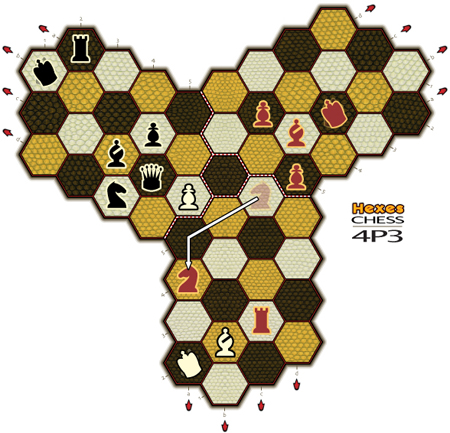StalemateWhen a player cannot make a legal move but is not in check, a stalemate exists. If three players remain, the match ends in a three-way draw. No player wins and none loses. (See below.) If a stalemate occurs after one opponent has been checkmated, the two remaining players share the draw. 
Stalemate PendingWhen a player tentatively stalemates the opponent to their right, the opponent to their left gets the next turn and might be able to interfere. This condition is called stalemate pending, or draw pending. (See below.) 
White might choose to break the stalemate by moving the white rook out of Black's way. Or, having slightly less material than Red, White might choose to confirm the stalemate by moving a piece that does not interfere with it, resulting a 3-way draw. |